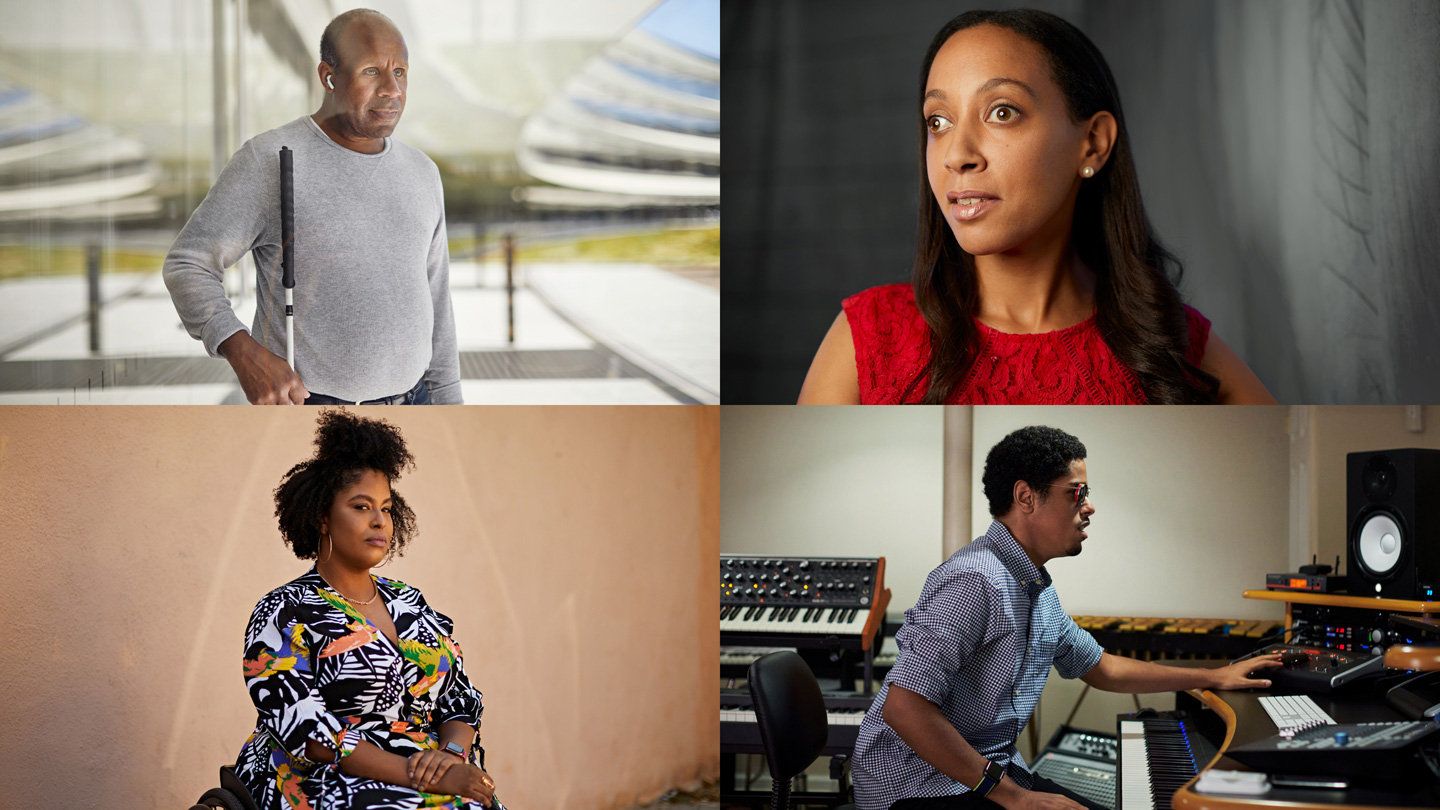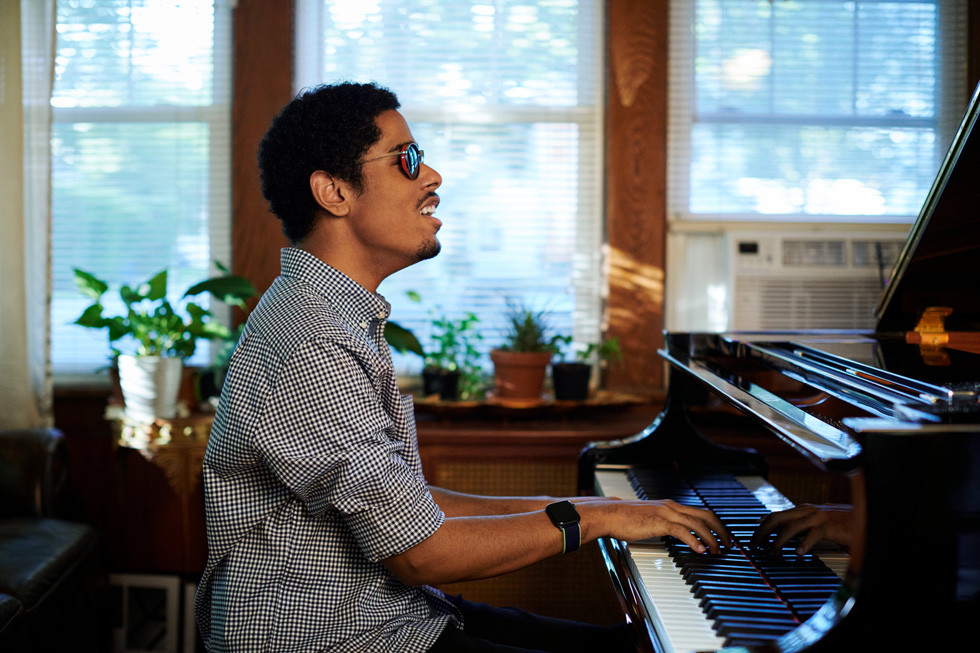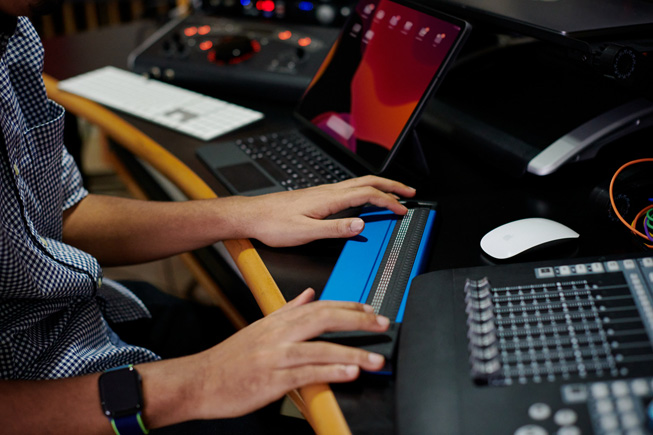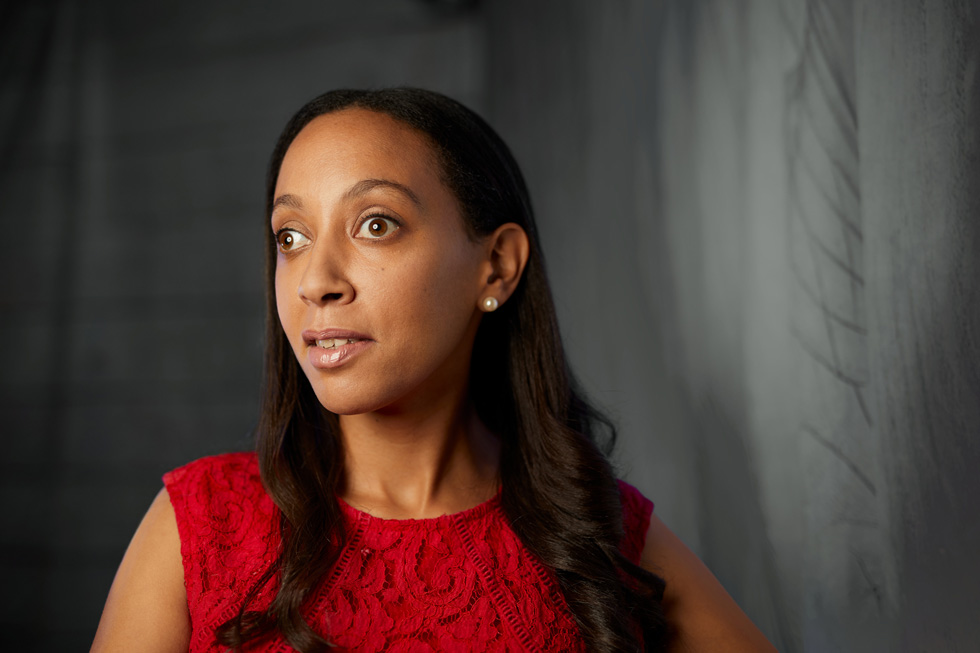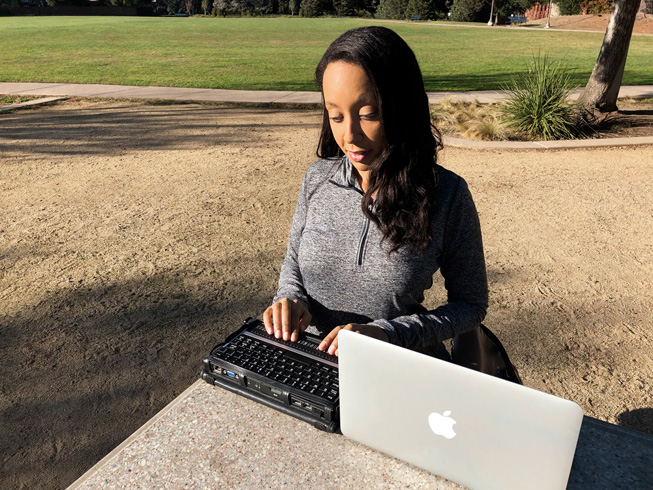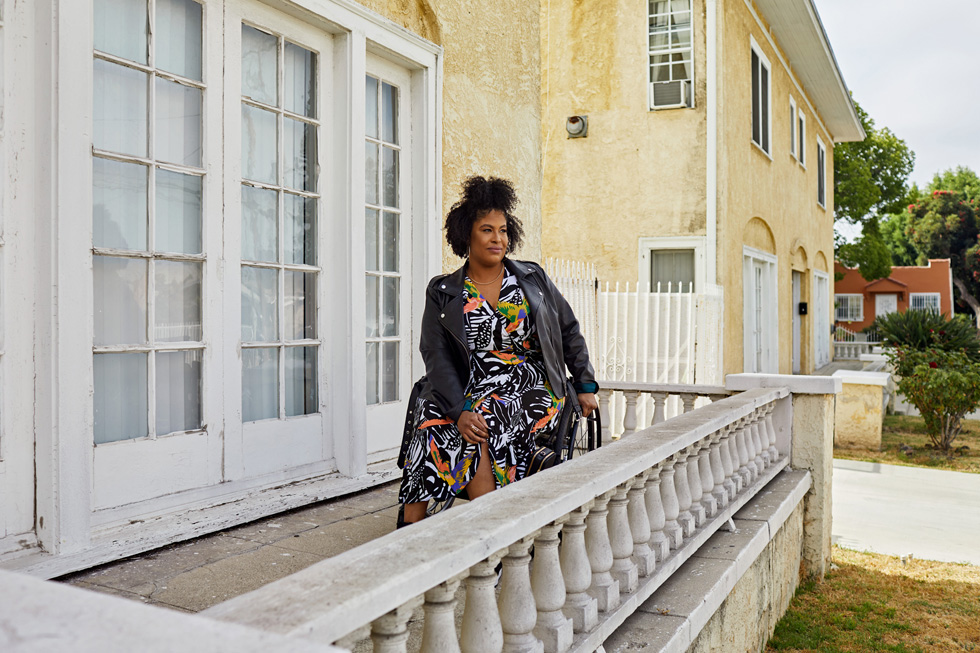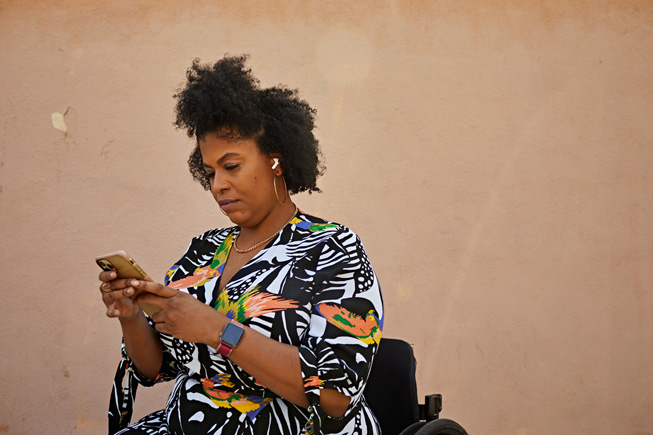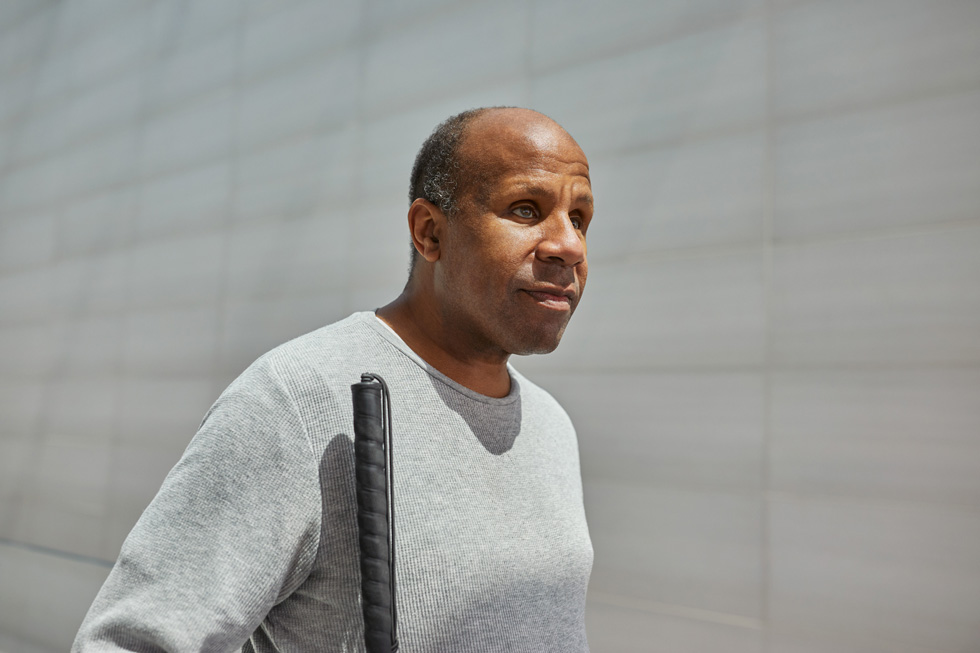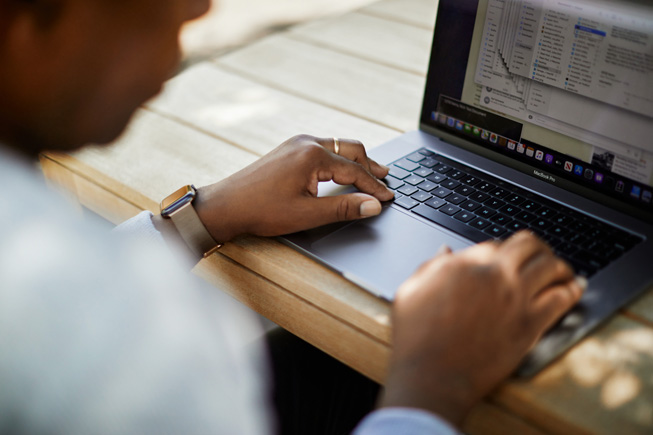FEATURE
July 22, 2020
Apple, creatives, and disability rights activists reflect on 30 years of the Americans with Disabilities Act
Since its founding, Apple has been a pioneer in democratising powerful technology through products and services designed for everyone. From VoiceOver and Text to Speech to Voice Control, Switch Control, and even Siri, every product and service in the Apple ecosystem is designed with accessibility built in.
“Accessible technology should be very clear,” says Dean Hudson, accessibility technical evangelist at Apple, who is part of the original team behind VoiceOver, the screen reader that enables people who are blind and low vision to navigate iPhone and Mac. “There really should not be any layer between the things I can do on my iPhone and the things someone who doesn’t have a disability can do.”
To honour the 30th anniversary of the Americans with Disabilities Act (ADA), disability rights activists and artists, along with Hudson, share their thoughts on how far the law has come, the technologies they use, and how much more society still needs to do. Below are their personal stories.
When I was young, my parents became very involved with support groups for parents of blind children. They learned about the ADA then. I used to hear the term but it was not until later, as I got older, that I understood what it meant.
History shows that there needs to be laws in place to protect citizens from discrimination due to race, colour, religion, and disability. The Civil Rights Act led the way for the ADA by promoting equality. As a Black American with a disability, I value the two equally. They are both just as important in protecting Americans against discrimination.
I still remember the day my dad gave me an iPod touch. I remember teaching myself how to use VoiceOver. I was so happy that I used it every day.
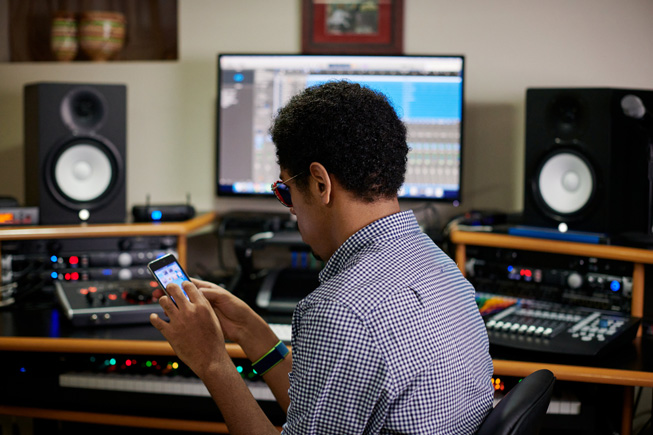
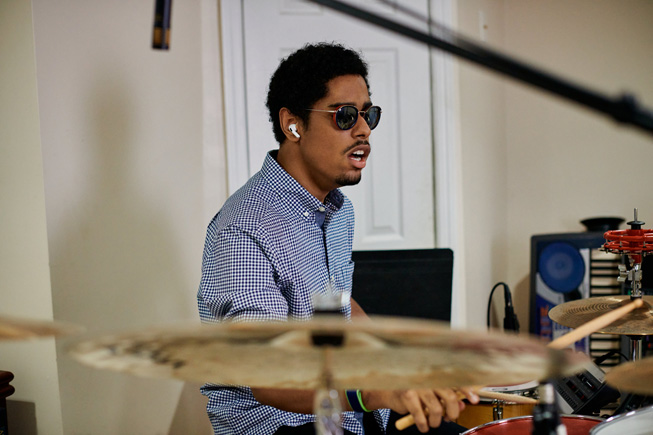
Whether it’s working on my albums “Now Hear This” and “Outta the Box,” notating a piece of music, or composing or arranging a song, whatever it is, I can always rely on different devices and apps to help out.
When I’m ready to record my music, I use Logic Pro X on my MacBook Pro. I usually record the drums first, then I add bass, then add whatever else I need. With VoiceOver enabled, I’m able to navigate really well around the software. Once the piece is completed, I can share the audio. I then create braille music using Lime Aloud software by Dancing Dots. This software not only produces braille music, but I can also print in sheet music for my band members.
Technology does not solve every obstacle one can encounter as a blind person, but having access to the equipment and applications I need in daily living, music creation, and being a student is the right of every American with a disability.
I grew up in a community that was more inclusive than most. Instructors taught me to ski before I was old enough to wonder how one would ski if they couldn’t see. The question was never, “Can a blind person do that?” But rather, “How would a blind person do that?”
While a Deafblind student in college, I witnessed advocates using the Americans with Disabilities Act to force tech companies to render digital services accessible. Impressed by the success of these advocates, I felt inspired to join them. Back then, and even now, I encountered many barriers in the digital world. Not because of my disability, but because of attitudes among tech developers who trivialise disability access.
In 2010, I became Harvard Law School’s first Deafblind student. Tech designed for accessibility allowed me to participate in classes and conduct legal research. Naturally, my studies centred on the ADA and tech. During my second year, the United States District Court for the District of Massachusetts ruled the ADA covers online businesses. I was absolutely thrilled! In 2013, I graduated, joined the California Bar, and began litigating ADA cases.
I represented the National Federation of the Blind in a lawsuit against a company that designed a library where blind readers were blocked from reading many of the ebooks and documents. The case established legal precedent as the first court decision in the Second Circuit, and the second in the country, holding the ADA’s promise of equality extends to virtual places. Since then we’ve had multiple cases upholding the ADA’s presence online.
After working in ADA litigation for a few years, I moved onto consulting, speaking, and writing. My memoir, “Haben: The Deafblind Woman Who Conquered Harvard Law,” teaches people about ableism, the widespread assumption that disabled people are inferior to non-disabled people. Learning to identify ableism will allow people to catch and remove it.
When I was 7 years old, my mom bought me a Polaroid camera, and I organised a photo shoot in my front yard. That was when I knew I was destined for a career in front of a camera. But today it’s still very taboo to include a person with a disability in advertising, in film, on TV, or on any pop culture media.
When I got to LA 10 years ago, people would tell me to network. I would try to go to events, but I literally could not get into the room. It was not wheelchair accessible. Film after film came out that had disability depiction, and no one casted had a disability. We in the community call this “cripping up.” Other marginalised communities receive support for calling out the lack of authentic representation, and nobody was talking about the lack of disability representation. That’s why I started Accessible Hollywood. My activism is essential for the growth and livelihood of my community.
I am a businesswoman. I run my own Black, disabled-owned business, and it gets complicated trying to navigate it all. Being a person with spina bifida, which is a neural tube defect, I am paralysed from the waist down, so I use my hands to do everything. They push my chair, do everyday tasks like dressing myself, and do all my typing. But, from being able to copy and paste on my phone to my laptop, to putting reminders on my HomePod, to using Voice to Text, to saying ‘Hey Siri, schedule this meeting’ and using Siri Shortcuts to get things done quicker with my voice, just having the entire Apple ecosystem in my home saves me so much time, thought process, and energy with my hands.
Technology makes my life a lot easier as a person who has multiple disabilities, who is building a full-time empire. I want my community of Black disabled women to feel seen. In the past 10 years, I’ve accomplished a lot in my modelling and acting career despite the barriers. In 2018, I was honoured for my contribution to inclusion in Hollywood entertainment as the first woman of colour to receive the Christopher Reeves Actor Scholarship. Hollywood is moving in the right direction with so many fantastic film and TV projects with authentic disability portrayal. I’m humbled at the opportunity to play a role in moving the needle forward.
Back in the late 1970s, my siblings would read computer manuals to me, and I would type in the programs. I was really curious about making things happen on the screen. I went into computer science and I had to have a physical person there in college, reading the screen, because screen readers didn’t exist yet.
I came to Apple in 2006. When my team started working on VoiceOver for iPhone, there was a lot of exploration around things like what happens when you touch items on your iPhone screen. A sighted user can see it and decide where to touch. I have to touch in order to see it. Several iterations led to Safe Explore, where if you want to activate something on your iPhone, you can double-tap anywhere on the screen. When iPhone 3G S launched with VoiceOver in 2009, little by little, people really started getting into it, and now it’s amazing to see people who are blind and all sorts of people with disabilities using the device.
Today people use technology in a variety of ways. There are a lot of voices behind how a feature should work in Apple products, and all of those voices are important. It makes the product much more customisable for users.
When you meet someone who is quadriplegic being able to get their own apartment and live on their own because of Switch Control, after needing a personal assistant with them 24/7 their whole life, that’s a life changer. Thirty years after the signing of the ADA, its benefits are really shown in results like these. I went to school and had a human read code to me on the screen, but now people can use these tools and actually get a job as an engineer. That’s huge.
Share article
Images of ADA 30th Anniversary
